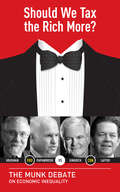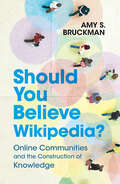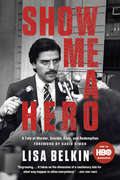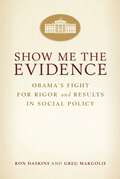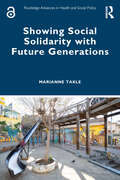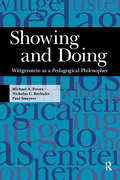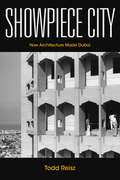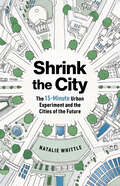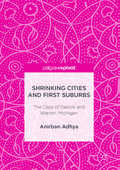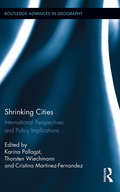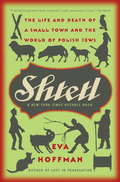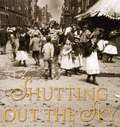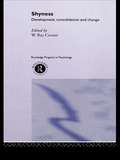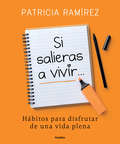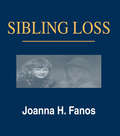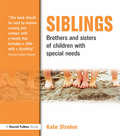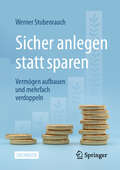- Table View
- List View
Should We Tax the Rich More?: The Munk Debate on Economic Inequality (The Munk Debates)
by Newt Gingrich Paul Krugman Arthur Laffer George PapandreouAs middle-class incomes stagnate in advanced economies while the rich experience record income gains, the eleventh semi-annual Munk Debate pits wealth redistribution supporters Paul Krugman and George Papandreou against Newt Gingrich and Arthur Laffer to debate taxation — should the rich pay more? For some the answer is obvious: redistribute the wealth of the top income earners who have enjoyed, for almost a generation, the lion’s share of all income gains. Imposing higher taxes on the wealthy is the best way for countries such as Canada to reinvest in their social safety nets, education, and infrastructure while protecting the middle class. Others argue that anemic economic growth, not income inequality, is the real problem facing advanced countries. In a globalized economy, raising taxes on society’s wealth creators leads to capital flight, falling government revenues, and less money for the poor. These same voices contend that lowering taxes on everyone stimulates innovation and investment, fuelling future prosperity. In this edition of the Munk Debates — Canada’s premier international debate series — Nobel Prize–winning economist Paul Krugman and former Prime Minster of Greece George Papandreou square off against former Speaker of the U.S. House of Representatives Newt Gingrich and famed economist Arthur Laffer to debate if the rich should bear the brunt of higher taxes. For the first time ever, this stimulating debate, which will take place in front of a sold-out audience, will be available in print. With advanced countries facing overextended social services, crumbling infrastructure, and sluggish economic growth, the Munk Debate on economic inequality tackles the essential public policy issue: Should we tax the rich more?
Should You Believe Wikipedia?: Online Communities and the Construction of Knowledge
by Amy S. BruckmanAs we interact online we are creating new kinds of knowledge and community. How are these communities formed? How do we know whether to trust them as sources of information? In other words, Should we believe Wikipedia? This book explores what community is, what knowledge is, how the internet facilitates new kinds of community, and how knowledge is shaped through online collaboration and conversation. Along the way the author tackles issues such as how we represent ourselves online and how this shapes how we interact, why there is so much bad behavior online and what we can do about it. And the most important question of all: What can we as internet users and designers do to help the internet to bring out the best in us all?
Show Me A Hero
by Lisa BelkinNOW AN HBO MINISERIESNot in my backyard -- that's the refrain commonly invoked by property owners who oppose unwanted development. Such words assume a special ferocity when the development in question is public housing. Lisa Belkin penetrates the prejudices, myths, and heated emotions stirred by the most recent trend in public housing as she re-creates a landmark case in riveting detail, showing how a proposal to build scattered-site public housing in middle-class neighborhoods nearly destroyed an entire city and forever changed the lives of many of its citizens.-- Public housing projects are being torn down throughout the United States. What will take their place? Show Me a Hero explores the answer.-- An important and compelling work of narrative nonfiction in the tradition of J. Anthony Lukas's Common Ground.-- A sweeping yet intimate group portrait that assesses the effects of public policy on individual human lives.
Show Me the Evidence
by Ron Haskins Greg MargolisThis book tells the story of how the Obama administration planned and enacted several initiatives to fund social programs based on rigorous evidence of success and thereby created a fundamental change in the role of evidence in federal policymaking.Using interviews with the major players from the White House, the Office of Management and Budget, federal agencies, Congress, and the child advocacy community, the authors detail the development and implementation of six evidence-based social policy initiatives by the Obama administration.The initiatives range widely over fundamental issues in the nation's social policy including preschool and K-12 education, teen pregnancy, employment and training, health, and community-based programs. These initiatives constitute a revolution in the use of social science evidence to guide federal policymaking and the operation of federal grant programs.A fascinating story for everyone interested in politics and policy, this book also provides a blueprint for policymakers worldwide who are interested in expanding the use of evidence in policy.
Show Me the Evidence
by Ron Haskins Greg MargolisThe first comprehensive history of the Obama administration's evidence-based initiatives. From its earliest days, the Obama administration planned and enacted several initiatives to fund social programs based on rigorous evidence of success. Ron Haskins and Greg Margolis tell the story of six-spanning preschool and K-12 education, teen pregnancy, employment and training, health, and community-based programs.Readers will appreciate the fast-moving descriptions of the politics and policy debates that shaped these federal programs and the analysis of whether they will truly reshape federal social policy and greatly improve its impacts on the nation's social problems.Based on interviews with 134 individuals (including advocates, officials at the Office of Management and Budget and the Domestic Policy Council, Congressional staff, and officials in the federal agencies administering the initiatives) as well as Congressional and administration documents and news accounts, the authors examine each of the six initiatives in separate chapters. The story of each initiative includes a review of the social problem the initiative addresses; the genesis and enactment of the legislation that authorized the initiative; and the development of the procedures used by the administration to set the evidence standard and evaluation requirements-including the requirements for grant applications and awarding of grants.
Show Them You're Good: A Portrait of Boys in the City of Angels the Year Before College
by Jeff HobbsThe acclaimed, award-winning author of The Short and Tragic Life of Robert Peace presents a &“carefully observed journalistic account [that] widens our view of the modern &‘immigrant experience&’&” (The New York Times Book Review) as he closely follows four Los Angeles high school boys as they apply to college.Four teenage boys are high school seniors at two very different schools within the city of Los Angeles, the second largest school district in the nation with nearly 700,000 students. In this &“exceptional work of investigative journalism…laced with compassion, insight, and humor&” (Publishers Weekly, starred review) Jeff Hobbs stunningly captures the challenges and triumphs of being a young person confronting the future—both their own and the cultures in which they live—in contemporary America. Blending complex social issues with each individual experience, Hobbs takes us deep inside these boys&’ worlds. The foursome includes Carlos, the younger son of undocumented delivery workers, who aims to follow in his older brother&’s footsteps and attend an Ivy League college; Tio harbors serious ambitions to become an engineer despite a father who doesn&’t believe in him; Jon, devoted member of the academic decathalon team, struggles to put distance between himself and his mother, who is suffocating him with her own expectations; and Owen, raised in a wealthy family, can&’t get serious about academics but knows he must. Including portraits of secondary characters—friends, peers, parents, teachers, and girlfriends—this &“uniquely illuminating&” (Booklist) masterwork of immersive journalism is destined to ignite conversations about class, race, expectations, cultural divides, and even the concept of fate. Hobbs&’s portrayal of these young men is not only revelatory and relevant, but also moving, eloquent, and indelibly powerful.
Showdown Of The Gods
by Victor SchlatterA humorous and controversial study of global village not following God's plan with analysis of international affairs; discusses Islamism, humanism and God. Gives background and history of the Bible.
Showing Social Solidarity with Future Generations (Routledge Advances in Health and Social Policy)
by Marianne TakleToday’s generations can affect the future ecosystem more than any previous generations and aggravate the welfare of future people. People who have not yet been born are excluded from political decisions important to their lives. Due to the future generations’ lack of influence, current generations have a responsibility to act.The current generation's responsibility for the well-being of future generations has been used as an argument for an increasing number of legislative and policy measures across the world but are rarely followed up in practice.This book examines when commitments to future generations are followed up in practice and in what situations they are not.A concept of solidarity with future generations is developed and applied to four policy areas: the UN 2030 Agenda, national political institutions for future generations, constitutions and climate lawsuits, and regulations of economic debt or savings for future generations. Germany and Norway are selected as cases to evaluate what the commitments might entail in practice.The book highlights where the gaps emerge, and what needs to be done. The failing transition from the global to the national level highlights a need for stronger cosmopolitan elements in the international political system. Institutional bindings are generally weak at the national level. Financial restrictions show it is possible to establish strong institutional constraints, but the focus on financial resources is too narrow. Both national and global institutional bindings must be strengthened to show social solidarity with future generations.
Showing Up: How Men Can Become Effective Allies in the Workplace
by Ray Arata&“More people recognize the importance of Allyship—and that&’s great. Unfortunately, many men still don&’t know what they need to do to effect change so everyone feels valued and empowered at work. In Showing Up, Ray Arata provides clear guidance on how to turn good intentions into action. I strongly recommend it to everyone interested in helping create a more equal and productive workplace.&” —Sheryl Sandberg, COO of Facebook and founder of LeanIn.Org and OptionB.Org Showing Up is a revolutionary step-by-step guide—by and for men—to end toxic masculinity and enact heart-based leadership, increase diversity, bolster the bottom line, and create a workplace culture where everyone wins. The Time's Up, Me Too, and Black Lives Matter movements have sounded a wake-up—especially for men. Organizations worldwide now realize the critical importance of diversity, equity, and inclusion (DEI) for underrepresented people. It&’s abundantly clear: the default model of masculinity isn&’t working for anyone. But for a new and healthier infrastructure, for permanent and transformational shifts, we need a plan that includes men. In Showing Up, Ray Arata details the proven methods he's shared with such companies as Verizon, Bloomberg, Moody's, Intel, Toyota, Hearst, and more, teaching men to • Embrace healthy masculinity as a cornerstone of inclusionary leadership; • Identify unhealthy masculine behaviors in the workplace—like mansplaining, manterrupting, and manopolizing; • Adopt behavior modifications aligned with being an inclusive leader and ally; • Incorporate specific language to use in healthy discussions; and • Leverage power and position to elevate underrepresented groups.
Showing and Doing: Wittgenstein as a Pedagogical Philosopher
by Paul Smeyers Michael A. Peters Nicholas C. BurbulesThree prominent Wittgenstein scholars introduce the broad educational significance of Ludwig Wittgenstein's work to a wider audience of educational researchers and practitioners through provocative, innovative, and playful readings of his work. They vividly demonstrate the influence of his thinking and its centrality to understanding our contemporary condition. Wittgenstein fundamentally shaped contemporary theories of language, representation, cognition, and learning. The book also traces the "pedagogical turn" of his thinking during the period from 1920 to 1926. What is most radical about Wittgenstein's later work is that it suggests learning and initiation into practices are fundamental to understanding his philosophy. The book not only provides a new and fresh interpretation of Wittgenstein's thought but also explores a new way of thinking about education as a way of revealing the educational dimension of philosophical problems.
Showpiece City: How Architecture Made Dubai (Stanford Studies in Middle Eastern and Islamic Societies and Cultures)
by Todd ReiszStaggering skylines and boastful architecture make Dubai famous—this book traces them back to a twentieth-century plan for survival. In 1959, experts agreed that if Dubai was to become something more than an unruly port, a plan was needed. Specifically, a town plan was prescribed to fortify the city from obscurity and disorder. With the proverbial handshake, Dubai's ruler hired British architect John Harris to design Dubai's strategy for capturing the world's attention—and then its investments. Showpiece City recounts the story of how Harris and other hired professionals planned Dubai's spectacular transformation through the 1970s. Drawing on exclusive interviews, private archives, dog-eared photographs, and previously overlooked government documents, Todd Reisz reveals the braggadocio and persistence that sold Dubai as a profitable business plan. Architecture made that plan something to behold. Reisz highlights initial architectural achievements—including the city's first hospital, national bank, and skyscraper—designed as showpieces to proclaim Dubai's place on the world stage. Reisz explores the overlooked history of a skyline that did not simply rise from the sands. In the city's earliest modern architecture, he finds the foundations of an urban survival strategy of debt-wielding brinkmanship and constant pitch making. Dubai became a testing ground for the global city—and prefigured how urbanization now happens everywhere.
Showroom City: Real Estate and Resistance in the Furniture Capital of the World (Globalization and Community)
by John Joe SchlichtmanA unique and engaging account of local urban decision-making within the globalizing world High Point, North Carolina, is known as the &“Furniture Capital of the World.&” Once a manufacturing stronghold, most of its furniture factories have closed over the past forty years, with production shipped off to low-wage countries. Yet as manufacturing left, the city tightened its hold on a biannual global exposition that serves as the world&’s furniture fashion runway. At the High Point Market, visitors from more than one hundred nations traverse twelve million square feet of meticulous design. Downtown buildings—once courthouses, movie theaters, post offices, and gas stations—are now chic showroom spaces, even as many sit empty between each exposition.In Showroom City, John Joe Schlichtman applies an ethnographic lens to the global exposition&’s relationship with High Point after it defeated rival Chicago in the 1960s and established itself as the world&’s dominant furniture center. In recent decades, following trends in global finance, private equity firms were increasingly behind downtown High Point&’s real estate transactions, coordinated by buyers far removed from the region. Then, in one massive transaction in 2011, a firm funded by Bain Capital purchased every major showroom building, and the majority of downtown real estate was under one owner. Showroom City is a story of exclusionary growth and unchecked development, of a city flailing to fill the void left by its dwindling factories. But beyond that Schlichtman engages the general lessons behind both High Point&’s deindustrialization and its stunning reinvention as a furniture fashion, merchandising, and design node. With great nuance, he delves deeply to reveal how power operates locally and how citizens may affirm, exploit, influence, and resist the takeover of their community.
Shrink the City: The 15-Minute Urban Experiment and the Cities of the Future
by Natalie Whittle“[Shrink the City] surveys ways in which cities around the globe have created compact neighborhoods where residents’ daily needs are quickly accessible on foot or by bicycle—a concept known as the 15-minute city. . . . deeply researched and winsomely written. . . an invaluable overview of the cutting edge of urban planning.”—Publishers Weekly Cities define the lives of all those who call them home: where we go, how we get there, how we spend our time. But what if we rethink the ways we plan, live in, and move around our cities? What if we didn’t need a car to reach the grocery store? What if we could get back the time we would have spent commuting and put it to other uses? In this fascinating, carefully researched and reported book, longtime Financial Times journalist Natalie Whittle investigates the 15-minute city idea—its pros, cons, and its potential to revolutionize modern living. From Paris, Melbourne, and Rotterdam to Charlotte, North Carolina, and Tempe, Arizona, cities worldwide are being guided by the 15-minute city’s ideals—with varying results. By looking at these examples, Whittle considers: what really happens when a city expands bike lanes and pedestrian areas—and disincentivizes long commutes which approaches to building affordable housing are actually effective how neighborhoods of varying wealth are affected by 15-minute city policies whether it’s possible to convince car-owning city dwellers to replace their vehicles with other forms of transport. This timely book serves as a call to reflect on our cities and neighborhoods—and it outfits us with insights on how to make them more sustainable, safe, and welcoming.
Shrinking Cities and First Suburbs
by Anirban AdhyaThis book examines Warren, a suburb of Detroit, Michigan, as a shrinking city facing a crisis of economic downturn, automotive restructuring, high unemployment, and real estate foreclosures. The author explores Warren's attempt to develop planning strategies, culturally-based initiatives, community design projects, and creative partnerships in the region in order to address the challenges of shrinkage and foreclosures at multiple scales. Global urban development is currently characterized by varied combination of metropolitan growth and urban core shrinkage. While much of the shrinkage is concentrated in central cities, first suburbs are now facing the same problem. The Warren case illustrates opportunities for flexible policies combining rightsizing, shared maintenance, and incremental development in struggling first suburban communities, which are less studied and often ignored.
Shrinking Cities: International Perspectives and Policy Implications (Routledge Advances in Geography #8)
by Thorsten Wiechmann Karina Pallagst Cristina Martinez-FernandezThe shrinking city phenomenon is a multidimensional process that affects cities, parts of cities or metropolitan areas around the world that have experienced dramatic decline in their economic and social bases. Shrinkage is not a new phenomenon in the study of cities. However, shrinking cities lack the precision of systemic analysis where other factors now at work are analyzed: the new economy, globalization, aging population (a new population transition) and other factors related to the search for quality of life or a safer environment. This volume places shrinking cities in a global perspective, setting the context for in-depth case studies of cities within Mexico, Brazil, Indonesia, Germany, France, Great Britain, South Korea, Australia, and the USA, which consider specific economic, social, environmental, cultural and land-use issues.
Shtetl
by Eva HoffmanIn Shtetl (Yiddish for "small town"), critically-acclaimed author Eva Hoffman brings the lost world of Eastern European Jews back to vivid life, depicting its complex institutions and vibrant culture, its beliefs, social distinctions, and customs. Through the small town of Braƒsk, she looks at the fascinating experiments in multicultural coexistence-still relevant to us today- attempted in the eight centuries of Polish-Jewish history, and describes the forces which influenced Christian villagers' decisions to conceal or betray their Jewish neighbors in the dark period of the Holocaust.
Shut Up and Sing: How Elites from Hollywood, Politics, and the UN are Subverting America
by Laura IngrahamIngraham unmasks the shallowness of elite thinking everywhere it is found: in politics, the media, the ivory tower, arts and entertainment, business and international organizations.
Shutting Out the Sky: Life in the Tenements of New York, 1880-1924
by Deborah HopkinsonLeonard Covello came to New York City from a small village in Italy in 1896. He and four other young immigrants, including Rose Cohen, who came to America from Belarus at age twelve, and Pauline Newman, who became one of the first organizers of the International Ladies' Garment Workers' Union, are the focus of this fascinating chronicle of the pursuit of the American dream. At turns poignant and humorous, the characters' stories unfold in chapters focusing on work, education, and other aspects of immigrant life in the tenement houses of the Lower East Side of New York City. Beautifully designed and illustrated with archival photos, Shutting Out the Sky is stunning, thoroughly researched nonfiction from award-winning author Deborah Hopkinson. Book jacket.
Shyness: Development, Consolidation and Change (Routledge Progress in Psychology)
by W. Ray CrozierWritten by some of the leading international authorities in the field, this volume provides an overview of significant contemporary psychological research into shyness. It brings together perspectives from developmental psychology, social psychology and clinical psychology.
Si salieras a vivir...: Hábitos para disfrutar de una vida plena
by Patricia Ramírez«Si salieras a vivir... ¿Qué harías para tener un día pleno?» Al compartir esta pregunta en las redes sociales, @patri_psicologa obtuvo respuestas sencillas, que no cuestan dinero y que son fáciles de llevar a cabo: pasear por la orilla del mar, ir andando a trabajar, tomar un café sin prisas, jugar al fútbol con la ilusión de un niño, plantar hierbabuena... <P><P>La vida no es perfecta, pero tu actitud sí puede serlo. Superarte, cambiar o plantearte metas es algo que deber elegir tú. E, independientemente del momento en el que te encuentres y de las circunstancias por las que atravieses, siempre tienes la libertad de elegir cómo enfrentarte a cada situación. <P>Porque la actitud no lo es todo, pero sí es el motor para alcanzar tus deseos. Y en el mundo hay actitud para todos, y en grandes cantidades. Sal a luchar por la ración que te toca. Tenemos la suerte, además, de poder entrenar la actitud, es decir, de afinar en aquello que nos falte para ser más felices, eficaces, hábiles y estar más serenos. <P>A través de doce hábitos saludables -la organización y planificación, el control de la ansiedad, la alimentación, saber decir «no», dedicar tiempo a uno mismo, la amabilidad, el autocontrol y la fuerza de voluntad, el ejercicio físico, el amor, la comunicación, una mente activa y la autoestima-, este libro entabla un diálogo muy rico entre autor y lector, con numerosos esquemas, ejercicios y post-its que lo ilustran, para que puedas entrenar tus pensamientos, emociones y comportamientos y llegar al puerto que elijas. <P> Si salieras a vivir... es una herramienta que debes poner en práctica hoy mismo y preguntarte: «Si saliera a vivir... ¿Qué haría para tener un día pleno?». Porque un día puede ser algo más que un día. Un día puede ser, en gran medida, lo que tú decidas. Y este te ayudará.
Sibling Issues in Therapy: Research and Practice with Children, Adolescents and Adults
by Avidan MilevskyIncorporating the latest research and clinical work in family dynamics, this book examines multiple angles of integrating sibling issues, which underlie issues at the core of many clinical difficulties presented by adult clients, in therapy to improve adulthood emotional and psychological well-being.
Sibling Loss
by Joanna H. FanosDespite the rise of clinical interest in posttraumatic stress disorder and traumatic stress in children, there has been little attention paid to the impact of sibling death as a traumatic event. Although there is much evidence that children suffer long-lasting consequences of such trauma as divorce or the loss of a parent, the loss of a sibling has not been the topic of substantial clinical or research attention. The sibling relationship has only begun to receive research and theoretical attention. The complexities of the sibling bond as it changes and evolves over the life-span have only begun to be explored. The death of a child has generally been considered one of the most stressful events encountered by families in our society. The chronicity of illnesses such as cystic fibrosis is in a sense new, an outgrowth of recent advances in medical treatment which have considerably extended the lives of children stricken with leukemia, cystic fibrosis, HIV-infection, diabetes, and others. This book explores the long-term consequences of chronic illness followed by the death of a sibling on adult adjustment. The illness and loss of the child will have a direct impact on the siblings, dependent upon their own capacity to give meaning to its occurrence and to mourn the loss effectively. In addition, the sibling's world will be inexorably shaped by the handling of the illness and loss by the parents.
Siblings: Brothers and Sisters of Children with Special Needs
by Kate StrohmThe siblings of children with special needs are often the overlooked ones in families struggling to cope. Kate Strohm is an experienced health professional and journalist who has sister with cerebral palsy. In this book she shares the story of her journey from confusion and distress to understanding and acceptance. She provides a forum for other siblings to describe their own journeys. Kate also provides strategies that siblings themselves, parents and practitioner can use to support the brothers and sisters of children with special.
Sich besser präsentieren: Wirkungsvolle Kommunikation für Wissenschaftler*innen
by Regina Maria JankowitschDrittmittelakquisition, Berufungen, Vorträge, Interviews & Co: Die Leser*innen erhalten eine praxisnahe Gebrauchsanleitung, wie sie konkrete kommunikative Herausforderungen ihres beruflichen Alltags effizienter, professioneller und effektiver bewältigen können. Rasch auf den Punkt zu kommen, sich einfach und doch präzise ausdrücken zu können und sich selbst bzw. wissenschaftliche Projekte besser positionieren bzw. verkaufen zu können – damit sind Wissenschaftler*innen aller Fachrichtungen und aller Karrierestufen innerhalb wie außerhalb der Universitäten aktuell ständig konfrontiert. Corona hat deutlich gemacht, was sich schon länger gezeigt hat: Fachwissen allein ist zu wenig.Dieses Buch ist ein praxisnaher Leitfaden für alle, die vor Fördermittelgebern und Kooperationspartnern, bei wissenschaftlichen Hearings, vor Laien-Publikum und in den Medien punkten wollen.
Sicher anlegen statt sparen: Vermögen aufbauen und mehrfach verdoppeln
by Werner StubenrauchDer Zinseszinseffekt, das „Grundgesetz der Geldvermehrung“, wird in seiner Wirkung enorm unterschätzt. Vielen Geldanlegern ist nicht bekannt, dass sich damit eine regelmäßige Verdopplung der Ersparnisse erreichen lässt. Auf diese Weise kann man eine solide private Altersvorsorge oder ein Vermögen aufbauen, auch in Zeiten von Inflation und Rezession. Entscheidend ist die Wahl geeigneter Geldanlagen. Längst nicht alles, was Banken und Versicherungen anbieten, ist sicher und ertragreich. Viele Angebote eignen sich nur zum kurzfristigen „Geldparken“, andere sind so hochspekulativ, dass solide denkende Anleger sie meiden sollten. Der Autor weist in diesem Buch den Weg durch den Dschungel der zahlreichen Angebote von Finanzinstituten. Anhand von Beispielen rechnet er nach und vergleicht, welche Produkte empfehlenswert sind; dabei berücksichtigt er auch Steuern und Inflation. Besonders lohnend sind gemanagte Aktienfonds. Holen Sie das Maximum aus Ihrem Geld heraus, indem Sieden Zusammenhang von Zeit, Zinshöhe, Zinzeszins und langfristigem, sicherem Ertrag verstehen und nutzen.
